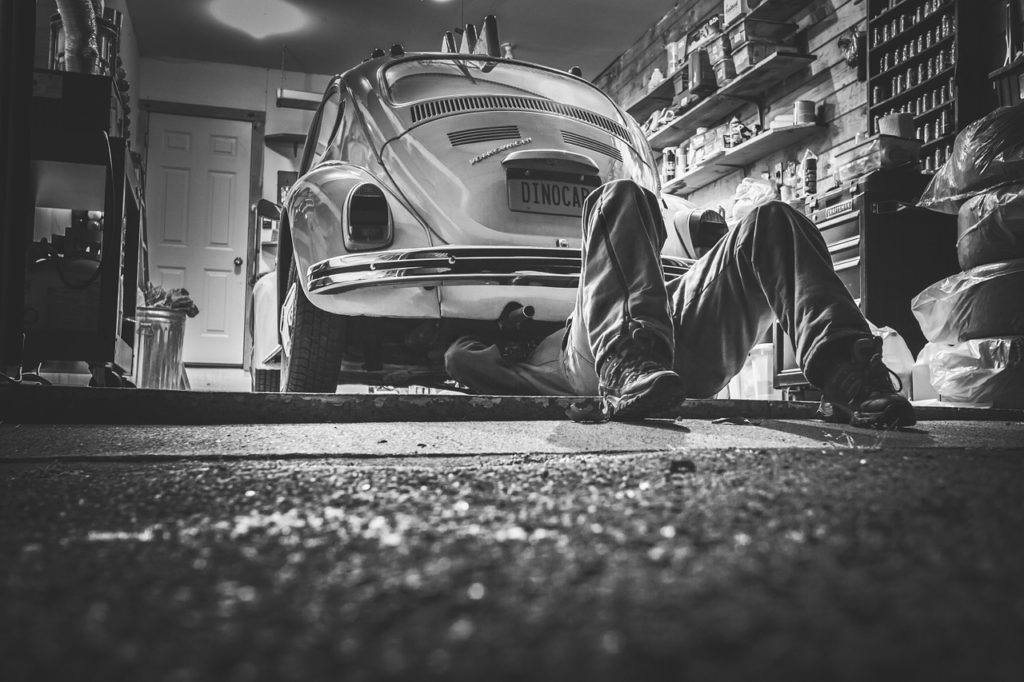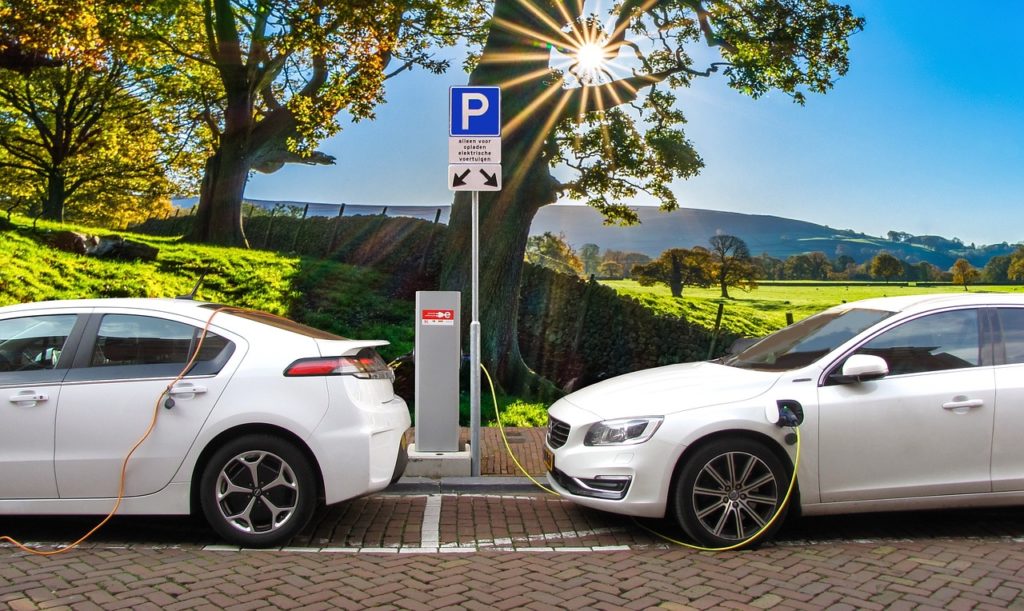Americans consumed about 143.85 billion gallons of gasoline last year, which translates into 1,222 gallons per household. The price of oil, and thus gasoline, has risen to levels not seen in 3.5 years. The national average cost of a gallon of gas is now $2.92.
At that price, the annual cost per household tops $3,500, nearly $300 a month!
Not your average consumer
Thanks to the beauty of Mint.com, I instantly know that we spend less than the average household. We average $123/mo, with the occasional summer road trip driving up the overall numbers.
We are under $100 for a lot of months.
It’s nice to know we’re doing our part to save the planet along with our pocketbooks.
7 ways to save money at the gas pump
As the price of gas goes up, many of us feel the pinch. We often ask ourselves, “how can I save a little at the gas pump?”
Here are 7 ways to save money at the gas pump.
1. Don’t own a vehicle
Perhaps the most obvious. If you don’t own a car, you won’t need gas. It’s that simple. I’ve lived in major metropolitan areas without a car. I miss those days sometimes.
Can you get by without a car?
The rise of ride-sharing platforms have lessened the dependence on car ownership overall. For some, it might be cheaper to just pay for a ride when you need one.
Giving up car ownership is liberating. There’s no pulling over to refuel, no insurance payments, no annual state inspection, no oil changes. Owning a car is expensive, and ditching the car will save you a lot more than just at the gas pump.
2. Drive less
Most American cities were designed with the automobile in mind. It’s hard to get from one part of town to another without a vehicle. Routine activities like going to the grocery store, commuting, etc. are made exponentially easier with your own car.
Let’s face it, not owning a vehicle at all is just not practical for a large percentage of the American population.
But it is possible to drive less.
 Mrs. Benjamins and I live in the DC suburbs and ride the commuter train daily into downtown DC. We used to commute to work separately. I would drive a little further to a train station that provided for a shorter, cheaper train ride. Mrs. Benjamins opted for the closer train station that necessitated a longer, more expensive train ride. Since her work pays her commuting costs, price was not a factor. She didn’t like the drive and didn’t mind the longer train ride.
Mrs. Benjamins and I live in the DC suburbs and ride the commuter train daily into downtown DC. We used to commute to work separately. I would drive a little further to a train station that provided for a shorter, cheaper train ride. Mrs. Benjamins opted for the closer train station that necessitated a longer, more expensive train ride. Since her work pays her commuting costs, price was not a factor. She didn’t like the drive and didn’t mind the longer train ride.
Two different stations, two different train lines, same final destination station.
She also would leave around the time I was normally getting out of bed. Commuting separately seemed to make sense.
Until recently.
I decided that I would get up earlier and Mrs. Benjamins and I would ride together to the closer train station. It seemed silly to go separately and the extra traffic in the morning started to wear on my nerves.
I’m saving 14 miles a day, about 225 work days during the year. At a price of $2.92 per gallon, assuming my car gets about 20 miles to the gallon, that’s an annual savings over $450!
- 14 miles a day, 225 days a year = 3,150 miles not driven
- 157.5 gallons of fuel not pumped
- $459.90 not spent on gasoline
Not everyone will have such obvious ways to cut back on driving, but there are other things we can all do. Combine errands, plan ahead, make the most of times when you do go out. Every few miles you don’t drive turns into an extra buck in your pocket.
3. Find cheaper gas
If you can’t cut back on the amount you drive, you might be able to pay less for the same amount. One of the more popular money-saving apps out there is Gas Buddy. Available on Android and iPhone, one of the many features of the app is a map of surrounding gas station prices.
Pull this up at home, and you may discover that your usual fill station is not the cheapest one around. Pull this up while out running other errands and you may discover better priced gas in other neighborhoods.
One item to note: don’t go too far out of your way for cheaper gas. If you drive further and burn more fuel to get there, you’ve just negated some or all of your savings.
Fuel Rewards is another way to obtain cheaper gas. Sign up and instantly receive at least $0.05 off at any Shell station. I generally don’t fill up at a Shell, but did find this useful during a recent road trip. I even saved a quarter a gallon at one station!
It’s free to sign up, so there’s no reason not to have this on standby when needed.
4. Get cash back
Credit cards aren’t for everyone, but if you’re responsible and pay your balance each month, you can get some of your purchase back from your credit card company.
Here are some credit cards to consider:
- I use the Citi Double Cash card to get 2% back (1% on the purchase, 1% on the payment). While not a huge amount, it certainly adds up over time.
- The Chase Freedom card generally will have one quarter per year offering 5% back at gas stations (up to $1500). If you don’t spend that much per quarter and have a few extra bucks laying around, go ahead and buy a gift card at the end of the quarter to max out this benefit. I love seeing all those Ultimate Rewards points pile up.
- There’s also a Bank of America card that offers 3% back on gas (up to $2500 per quarter, 1% after that)

None of these require an annual fee, so everything you get back is extra icing on the cake. If you spend a lot on gas, you might want to look to maximize your cash back benefits.
Of course, don’t forget to pay your bill each month. Any accrued interest charges will negate any savings in a hurry.
5. Drive slower
You don’t have to drive like your grandma, but small changes in driving habits can help save on fuel consumption. You’ll be safer and save money at the same time. Using less fuel is the immediate reward, but you’ll also lessen your risk of traffic violations and accidents, saving money down the road, too.

Optimal speed for most cars is around 55-60 mph. Once the speedometer shows higher numbers, you’re cutting into fuel efficiency. Pushing the needle all the way to 75 mph can increase your fuel consumption by 20% or more.
You can even save on fuel on short trips around town, where we spend the majority of time behind the wheel. Accelerate slowly, without putting the pedal to the medal. When you step on the gas, you’re pumping more fuel through the engine in order to go the same distance.
Likewise, pay attention to what’s up ahead of you. Red light? Take your foot off the gas. Traffic backed up? If there’s a slowdown in front of you, let your car decelerate naturally, and avoid hitting the gas only to necessitate slamming on the brakes just a few feet down the road.
6. Maintain your vehicle
Sometimes we have to spend money to save money. One of the most important things you can do is service your automobile regularly. This will not only help maximize fuel efficiency, but will also help extend the life of your car, saving you money down the road.

Most owner’s manuals will provide servicing recommendations. Cars don’t actually need to have their oil changed every three months as previously recommended, and your manual should provide the optimal time frame.
Keep good records of your car’s maintenance. If the service center recommends something you weren’t planning on, it’s important to know when that procedure was last completed. You might get suckered into paying for a service your car doesn’t yet need. Know when something was last done and know how often that something should be done.
Arming yourself with this information will lead to a more productive conversation with those recommending specific services. Are you being told to flush your brake fluid? Don’t just take their word for it, do a quick google search for “flush brake fluid” and find out when this might be necessary. This will help you determine if you really need to perform the service or if someone is trying to make a buck off you.
A well-maintained vehicle will last a long time and deliver optimal fuel efficiency throughout.
7. Get a new car
Yes, this measure is extreme, but if your vehicle guzzles gas like a frat boy guzzles cheap beer during pledge week, it might be worth considering.

With an average of 12,000 miles driven annually, an increase in efficiency of just five miles per gallon can save over $350/annually.
Maybe your kids are grown and out of house and you’re looking to trade in that 2010 Ford Explorer. Dumping that vehicle and its estimated 15 mpg for a 2016 Honda Civic and its estimated 34 mpg would cut your monthly gas bill by more than 50%!
Gas is expensive. Some combination of these tips might save you a few bucks. Who doesn’t love that?


I have to drive lots of miles for work and one thing that I find helps save money in is synthetic oil.
You can extend your oil change interveral and it improves MPG slightly.
Synthetic has come a long way. I use it to and schedule the oil change about every 10k miles. Not sure i notice an impact in gas mileage as I’ve never used anything but in this car.
Our local grocery store sells gas (King Soopers, a Kroger store); they also sell gift cards. When they offer 4x “fuel points” on gift cards, we buy cards for stores we plan to shop at: Lowes, Target, Amazon, etc. $100 of gift card gets us 400 “fuel points” or 40 cents off a gallon of gas, up to 35 gallons. We needed stuff from all three stores I listed, so my wife bought $250 of gift cards. We then filled our two cars, plus some of our daughter’s car, plus got the 2% cash back on our credit card. Total saved: $40 for a few seconds of extra work.
Great idea! A savings of even a few cents a gallon can really add up, and 40 cents is phenomenal. Oh how I miss the days of gas under a buck!
For the case #2. Drive Less: It comes to 460/225= $2 per day saved if you don’t drive to the station. What is the fraction you have to pay extra for commuting from/to a station of a different price zone? You also have to sleep less… If someone told me “Wake up half an hour earlier, brave the elements on your walk, then have a longer trip, but I’ll give you a dollar!”, my response would be obvious 😉
Well, I’m not walking to the station, between my wife and I, we now take one car to one station instead of two cars to two stations. The commute time is about the same and I don’t have to wake up any earlier if I don’t want to.
Yes, some of the savings gets eliminated as I now travel one additional zone on the VRE. With that money coming out pre-tax, the additional expense is not much. All things equal, I’d rather spend money on a train then on gas and wear and tear on the car.